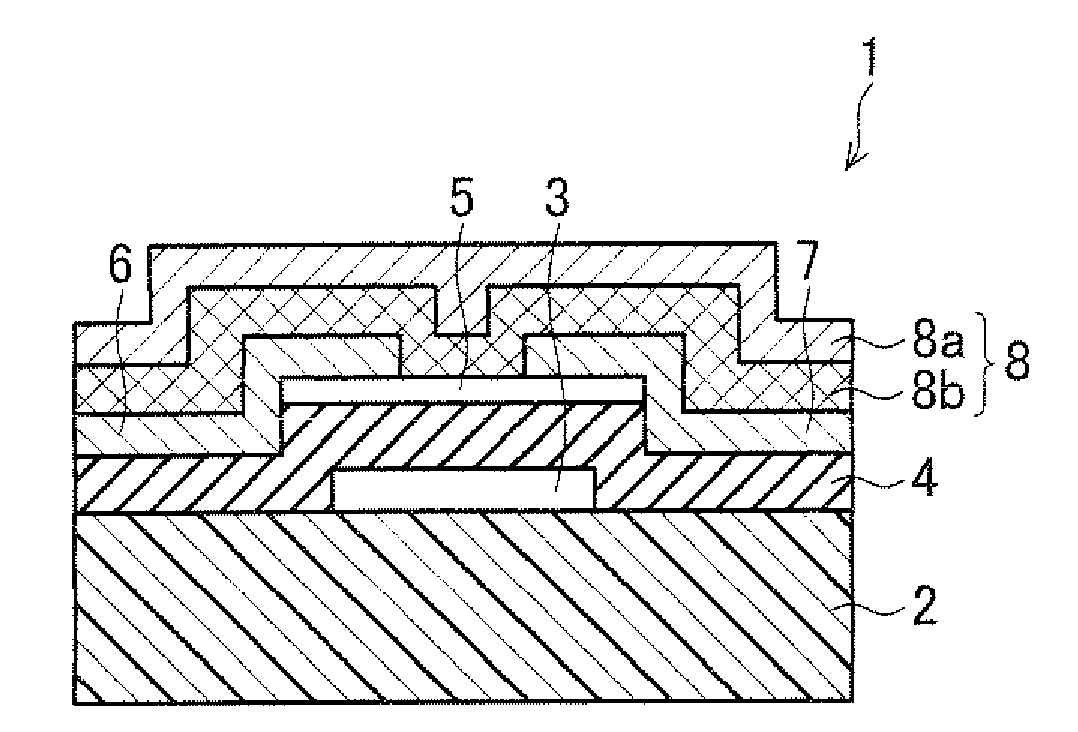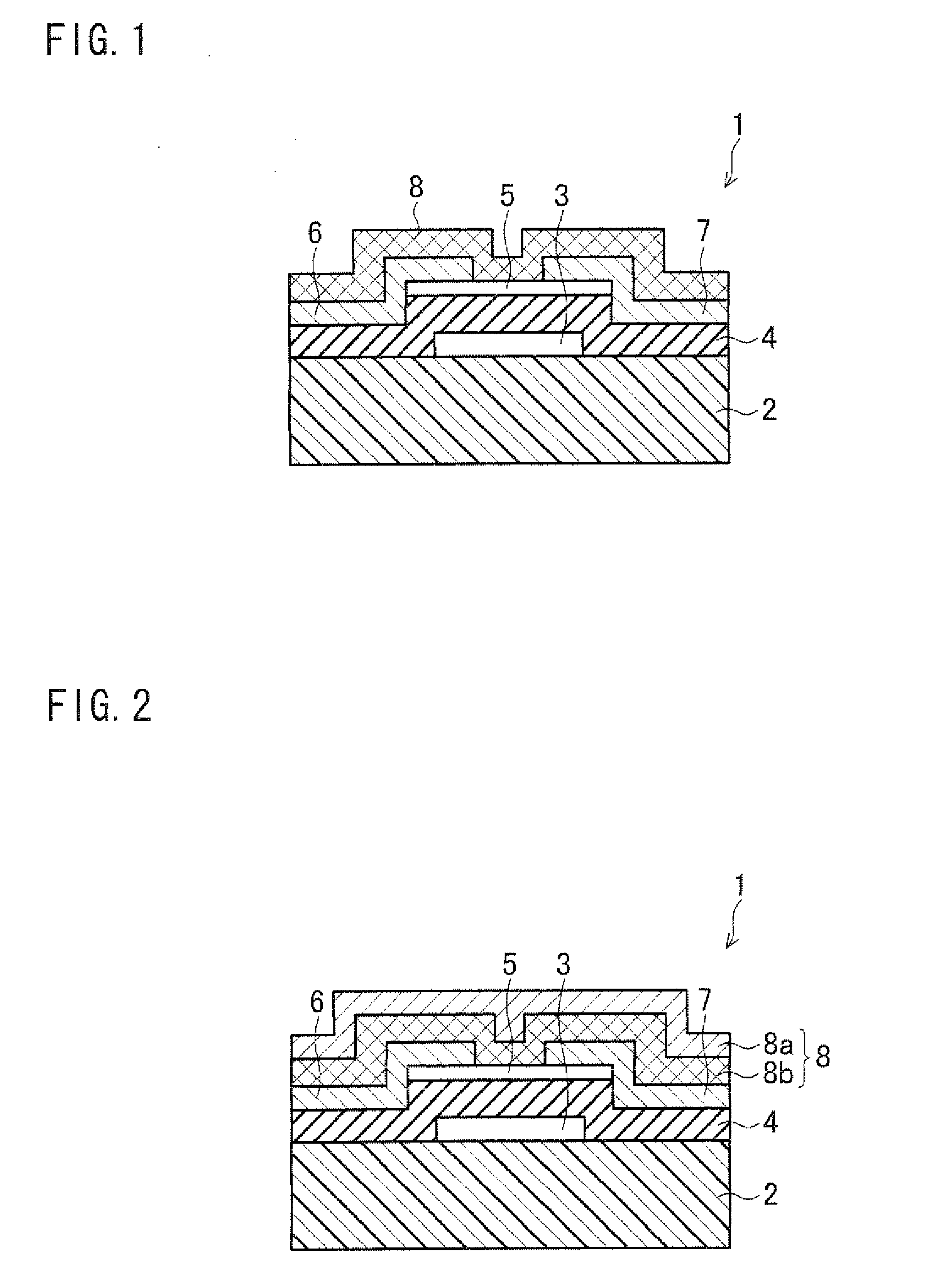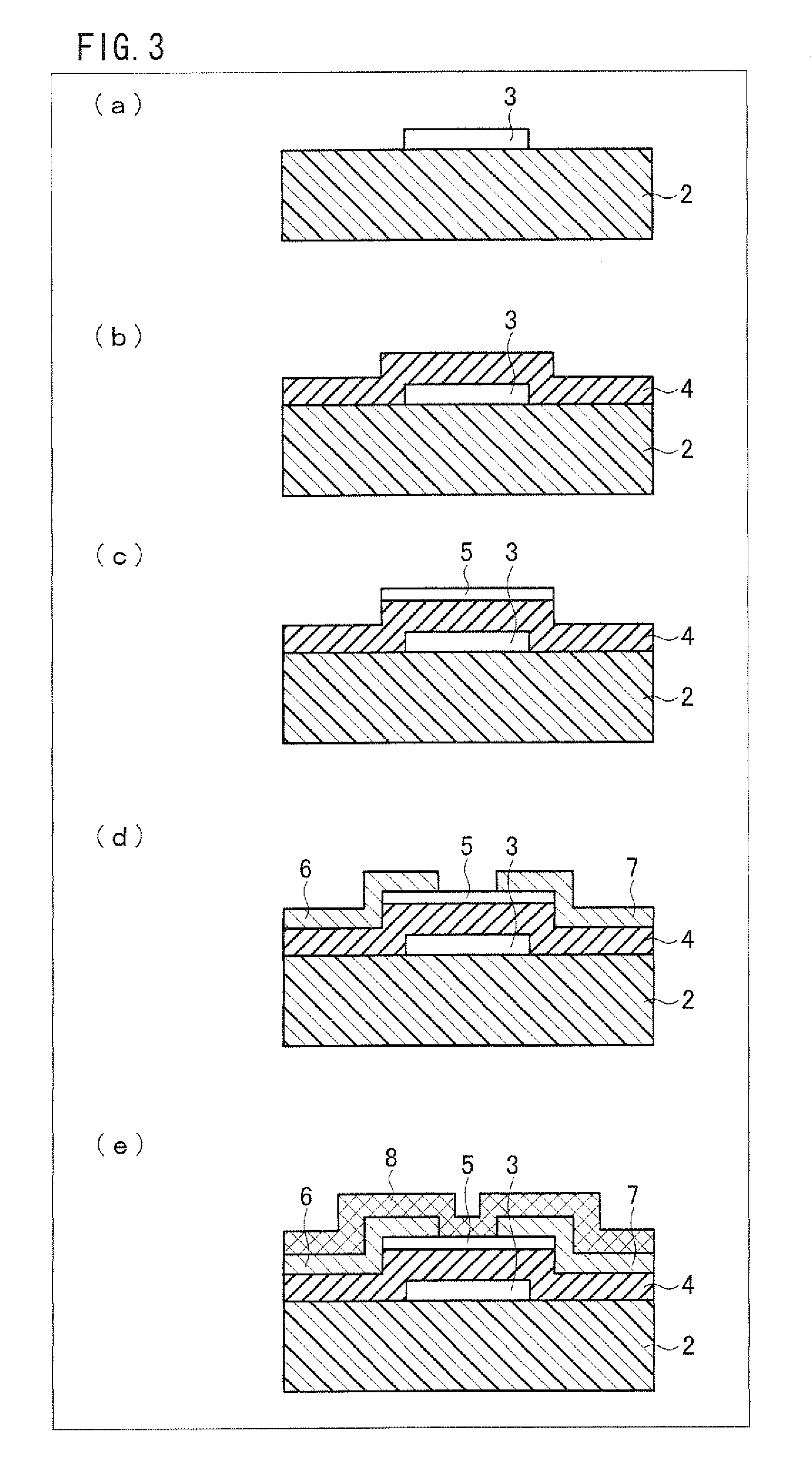Semiconductor element, method for manufacturing same, and electronic device including same
a semiconductor element and method technology, applied in the direction of semiconductor devices, basic electric elements, electrical appliances, etc., can solve the problems of not being able to suppress the deterioration of transistor characteristics, not being able to obtain a crystallized thin zinc oxide film unlike silicon, and being difficult to achieve a crystallized thin zinc oxide film. , to achieve the effect of improving the tft characteristic of the semiconductor element, reducing the influence of grain boundary, and enhancing the performance of an electronic devi
- Summary
- Abstract
- Description
- Claims
- Application Information
AI Technical Summary
Benefits of technology
Problems solved by technology
Method used
Image
Examples
embodiment 1
[0065]As shown in FIG. 1, a thin-film transistor 1 of the present embodiment includes an insulating substrate 2, a gate electrode 3, a gate insulating layer 4, a semiconductor layer 5, a source electrode 6, a drain electrode 7, and a protection layer 8. The gate electrode 3 is provided on the insulating substrate 2. The semiconductor layer 5 is provided so as to be stacked above the gate electrode 3 via the gate insulating layer 4. Further, the source electrode 6 and the drain electrode 7 are provided, as respective electrode sections, on the semiconductor layer 5. The source electrode 6 and the drain electrode 7 are connected to each other via the semiconductor layer 5. Furthermore, the protection layer 8 is provided so as to cover the semiconductor layer 5, the source electrode 6, and the drain electrode 7. That is, the thin-film transistor 1 has an inversely staggered structure.
[0066]Further, in a case where the thin-film transistor 1 is used in a display device (e.g. a later des...
embodiment 2
[0106]Another embodiment of the present invention is described below with reference to FIGS. 4 and 5. For convenience of explanation, constituents which have identical functions to those of the Embodiment 1 are given identical reference numerals, and are not explained repeatedly.
[0107]A display device 10 of the present embodiment is an active matrix liquid crystal display device. As shown in FIG. 4, the display device 10 includes a pixel array 31, a source driver 32, a gate driver 33, a control circuit 34, and a power supply circuit 35.
[0108]Each of the pixel array 31, the source driver 32, and the gate driver 33 is formed on a substrate 36. The substrate 36 is made of a material having insulation properties and light-transmitting properties (e.g. glass). The pixel array 31 includes source lines SL, gate lines GL, and pixels 37.
[0109]In the pixel array 31, a plurality of gate lines GLj, GLj+1 . . . intersect with a plurality of source lines SLi, SLi+1 . . . , and a pixel 37 (PIX in ...
example 1
Study of Conditions Under which Impurities are Added to an Active Layer
[0145]A semiconductor element of the present invention includes an active layer in which impurities are added to polycrystalline ZnO film. That is, in manufacturing the semiconductor element of the present invention, it is necessary to add the impurities to the polycrystalline ZnO film. It is necessary that the impurities are added to the polycrystalline ZnO film under a condition such that ZnO of the polycrystalline ZnO film to which the impurities are added does not dissolve. In view of this, this example studied an adding condition under which sulfur was added to a polycrystalline ZnO film with the use of the CBD method so that ZnS was formed in a grain boundary. Used as a solution in the CBD method is a solution for forming ZnS (zinc sulfide) film which contains ZnSO4.7H2O (Zn precursor), SC(NH2)2 (sulfur precursor), and an ammonia solution (complexing agent).
[0146]FIG. 6 shows a relationship between concentr...
PUM
 Login to View More
Login to View More Abstract
Description
Claims
Application Information
 Login to View More
Login to View More - R&D
- Intellectual Property
- Life Sciences
- Materials
- Tech Scout
- Unparalleled Data Quality
- Higher Quality Content
- 60% Fewer Hallucinations
Browse by: Latest US Patents, China's latest patents, Technical Efficacy Thesaurus, Application Domain, Technology Topic, Popular Technical Reports.
© 2025 PatSnap. All rights reserved.Legal|Privacy policy|Modern Slavery Act Transparency Statement|Sitemap|About US| Contact US: help@patsnap.com



